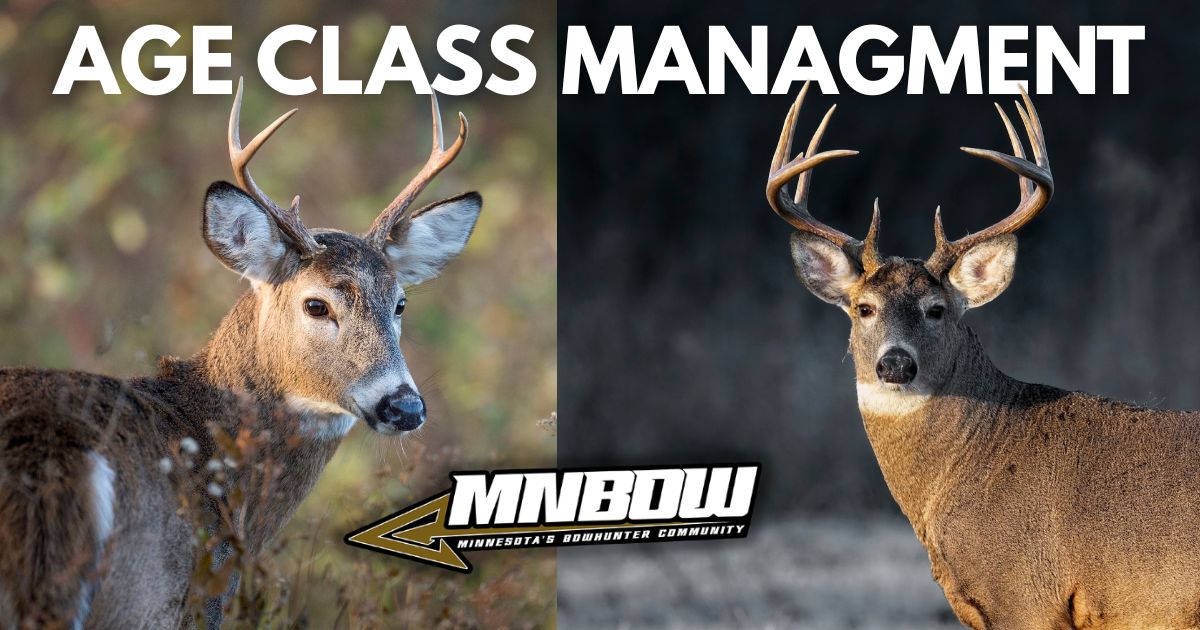Managing whitetail deer by age class has become a key strategy for hunters and wildlife managers who want to create healthier deer herds, improve hunting experiences, and promote sustainable populations. Understanding age class management means going beyond just counting antlers or harvest numbers—it’s about looking at the full picture of herd structure and long-term success in the field.
What Is Age Class Management?
Age class management focuses on creating a balanced population of deer across different age groups—from yearlings (1.5 years old) to mature bucks (4.5+ years) and does of varying ages. The goal is to avoid having a herd dominated by young deer or, conversely, by a few older deer with no recruitment behind them.
In many traditional hunting areas, especially where there's little harvest strategy, the majority of bucks taken are just 1.5 years old. This removes animals before they reach their full potential in both body size and antler growth. Age class management aims to change that.
Why Does Age Class Matter to Hunters?
-
Better Buck Quality:
Bucks don't typically reach their peak antler potential until around 4.5 to 6.5 years of age. Letting younger bucks walk for a few seasons gives them the chance to mature and develop into the kind of trophy-class animals that get hearts pounding during rut. -
More Natural Behavior:
Mature bucks behave differently than young ones. Older deer are more cautious and strategic, offering a more challenging and rewarding hunting experience. A well-structured age class herd produces a more “natural” rut, with older bucks actively competing and tending does. -
Herd Health and Balance:
A healthy mix of age classes in both bucks and does helps stabilize population dynamics. It improves breeding efficiency, reduces stress on the herd, and minimizes the potential for overpopulation, which can lead to habitat degradation and disease issues.
How to Implement Age Class Management
1. Harvest Selectively
Hunters need to learn to identify deer by age and be willing to pass on young bucks—even if they have decent antlers. This takes discipline, especially on public land, but it's essential for letting bucks mature.
2. Manage Doe Numbers
While much focus is placed on bucks, does play a crucial role in herd balance. In overpopulated areas, harvesting the appropriate number of does each year ensures food sources aren’t stretched thin and helps keep the herd at a sustainable level.
3. Monitor with Trail Cameras
Using cameras to survey deer allows hunters and landowners to better understand what’s in their area. You can identify which bucks are returning year after year and track their development.
4. Collaborate with Neighbors
Age class management works best on a landscape level. If your neighbors are all shooting yearling bucks, your efforts may fall short. Working together through co-ops or informal agreements can multiply the impact of your management plan.
The Bottom Line
Age class management isn’t just for trophy hunters—it’s for anyone who wants to see a healthier, more balanced deer population and enjoy a higher-quality hunt. By letting young bucks grow and maintaining a well-structured herd, hunters can create a better future for whitetails in their area. It requires patience, education, and teamwork—but the payoff is well worth it when that mature buck steps into your shooting lane after years of smart decisions in the field.
Ready to Make a Difference?
Whether you're hunting on your own property or part of a deer camp with buddies, start talking about age class management. One good decision today can lead to more mature bucks, healthier does, and unforgettable hunts tomorrow.


